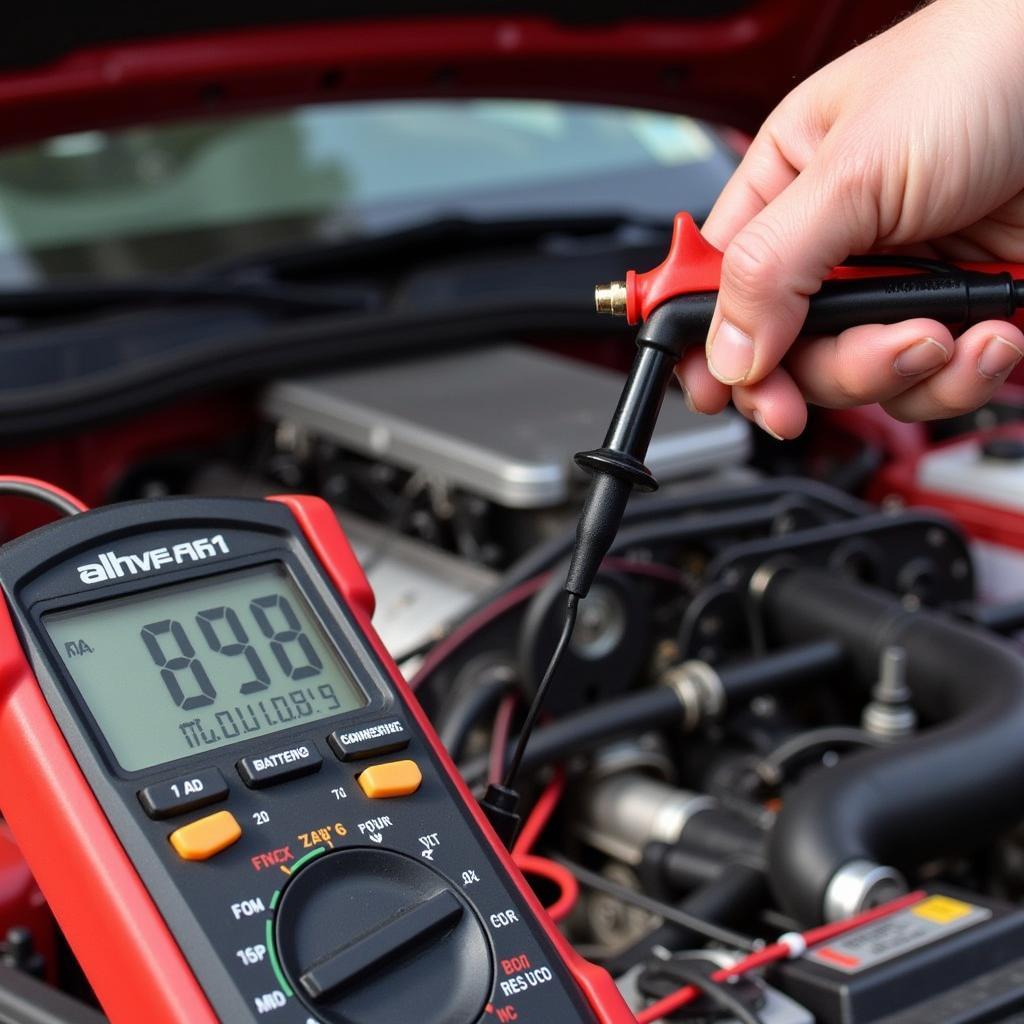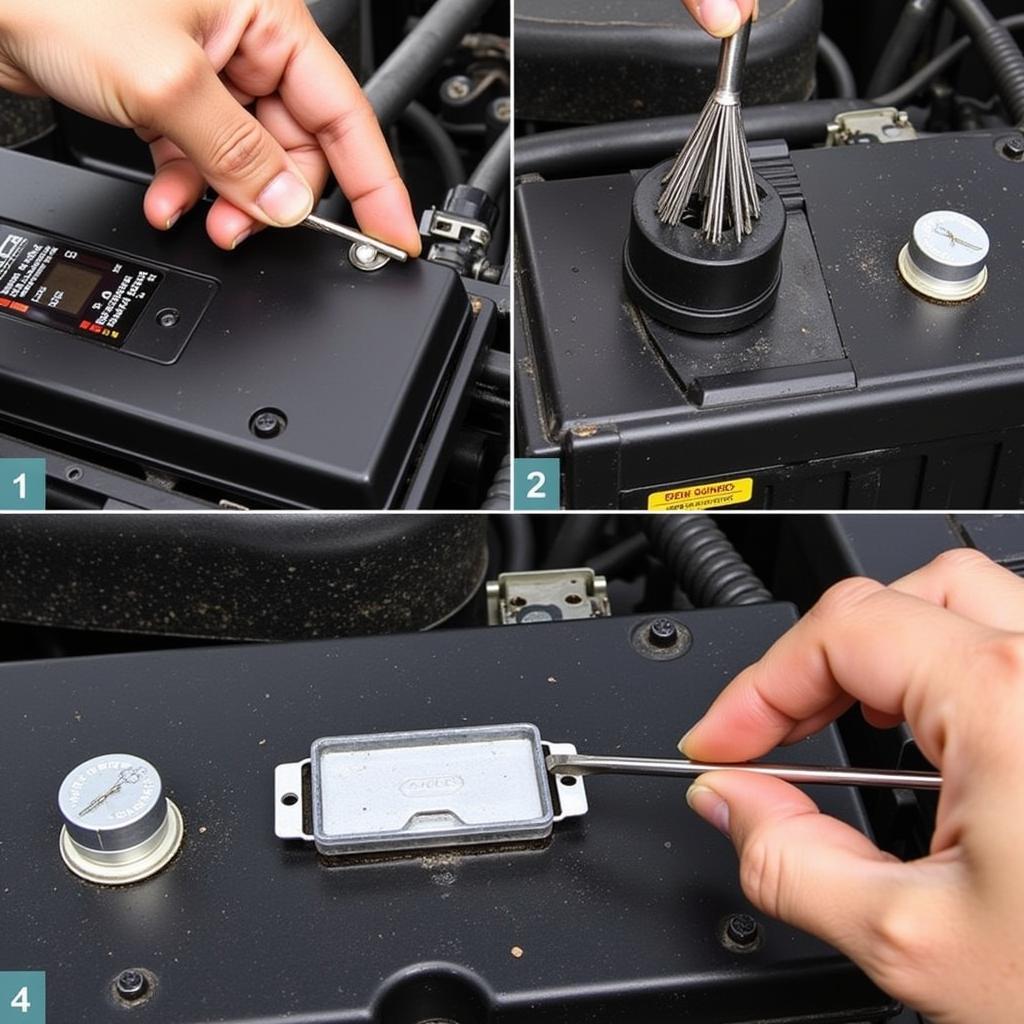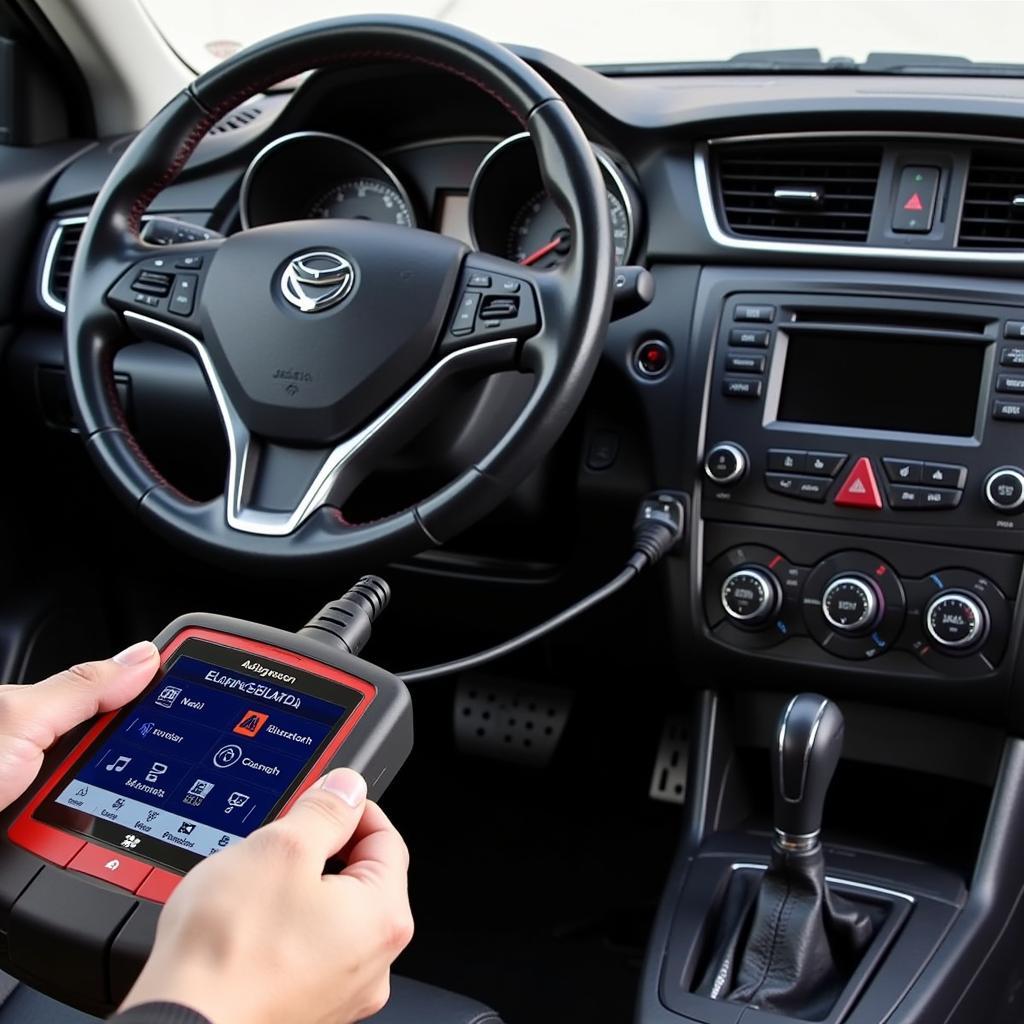A dead battery in your 2006 Mustang GT can be incredibly frustrating. This guide tackles the common causes of a 2006 mustang gt battery drain, providing you with the diagnostic steps and solutions you need to get your pony back on the road. We’ll cover everything from simple checks to more advanced troubleshooting techniques.
Common Culprits Behind a 2006 Mustang GT Battery Drain
Several factors can contribute to excessive battery drain in your Mustang. Some are simple to diagnose and fix, while others require a bit more investigation. Let’s explore the most frequent offenders.
Parasitic Draw: The Silent Battery Killer
A parasitic draw is a continuous drain on your battery even when the car is off. This can be caused by faulty components, wiring issues, or even aftermarket accessories.
- Faulty Alternator: A failing alternator can overcharge or undercharge the battery, leading to premature failure and drain.
- Bad Battery: A battery nearing the end of its lifespan may struggle to hold a charge, mimicking a drain issue.
- Interior Lights: A seemingly innocuous interior light left on can drain your battery overnight. Thoroughly check the glove box, trunk, and under-hood lights.
- Aftermarket Accessories: Improperly installed or malfunctioning aftermarket accessories, such as stereos or alarms, can be a significant source of parasitic draw.
 2006 Mustang GT Battery Drain: Parasitic Draw Test with Multimeter
2006 Mustang GT Battery Drain: Parasitic Draw Test with Multimeter
Identifying the Source of the Drain: A Step-by-Step Guide
Here’s a systematic approach to pinpoint the source of your 2006 Mustang GT battery drain:
- Safety First: Disconnect the negative battery terminal.
- Connect a Multimeter: Set your multimeter to measure DC amps. Connect the red lead to the disconnected negative battery cable and the black lead to the negative battery terminal.
- Observe the Reading: A small draw (less than 50 milliamps) is normal. A higher reading indicates a significant drain.
- Isolate the Circuits: Begin pulling fuses one by one, observing the multimeter reading after each fuse removal. A significant drop in the reading indicates the circuit connected to that fuse is the culprit.
- Narrow Down the Component: Once you’ve identified the circuit, consult your owner’s manual to determine which components are on that circuit. Inspect each component for faults or damage.
How Do I Know If My Alternator Is Bad?
A faulty alternator can lead to a drained battery. Here are some signs of a bad alternator:
- Dimming Headlights: Headlights that dim or flicker, especially when accelerating.
- Warning Lights: The battery or charging system warning light illuminates on the dashboard.
- Strange Noises: Whining or grinding noises coming from the alternator.
- Electrical Issues: Difficulty starting the car or experiencing other electrical problems.
“A failing alternator can be a hidden cause of battery drain,” explains automotive electrical expert, David Miller, ASE Certified Master Technician. “It’s essential to have your alternator tested if you suspect it’s the source of the problem.”
Preventive Measures: Keeping Your Battery Healthy
Taking proactive steps can help prevent future battery drain issues:
- Regular Battery Testing: Test your battery voltage regularly to ensure it’s holding a charge properly.
- Clean Battery Terminals: Keep your battery terminals clean and free of corrosion.
- Minimize Accessory Use While the Engine is Off: Avoid using power-hungry accessories like the stereo or headlights when the engine isn’t running.
 Cleaning Corroded Battery Terminals on a 2006 Mustang GT
Cleaning Corroded Battery Terminals on a 2006 Mustang GT
Conclusion
Addressing a 2006 mustang gt battery drain can be a DIY project with the right approach. By systematically checking the common culprits and following the diagnostic steps outlined in this guide, you can often identify and fix the problem yourself. However, if you’re unsure or uncomfortable working on your car’s electrical system, it’s always best to consult a qualified mechanic. Regular maintenance and preventative measures can also help keep your Mustang’s electrical system healthy and avoid future battery woes. “Addressing battery drain proactively can save you time, money, and frustration in the long run,” adds Miller. “Don’t wait until you’re stranded with a dead battery.”
FAQ
- What is the average lifespan of a car battery? Typically, car batteries last between 3 and 5 years.
- Can extreme temperatures affect battery life? Yes, both extreme heat and cold can shorten battery lifespan.
- How can I test my battery voltage? You can use a multimeter or a battery tester to check your battery voltage.
- What is considered a normal parasitic draw? A normal parasitic draw is generally less than 50 milliamps.
- Is it safe to jump-start a car with a dead battery? Yes, but follow proper jump-starting procedures to avoid damage to your vehicle.
- Should I disconnect my battery if I’m not going to drive my car for a long time? Yes, disconnecting the negative battery terminal can prevent drain while the car is stored.
- What are some signs of a dying car battery? Slow engine cranking, dim headlights, and clicking sounds when you turn the key are common signs.


